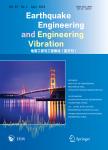Discussion on the influence of truncation of ground motion residual distribution on probabilistic seismic hazard assessment
Discussion on the influence of truncation of ground motion residual distribution on probabilistic seismic hazard assessment作者机构:Institute of Geophysics China Earthquake Administration Beijing 100081 China Institute of Geology China Earthquake Administration Beijing 100029 China
出 版 物:《Earthquake Engineering and Engineering Vibration》 (地震工程与工程振动(英文刊))
年 卷 期:2011年第10卷第3期
页 面:379-392页
核心收录:
学科分类:070801[理学-固体地球物理学] 07[理学] 0708[理学-地球物理学]
基 金:Program of Seismic Ground Motion Parameter Zonation Map of China the Basic Research Fund of the Institute of Geophysics Under Grant No.DQJB11C18 the Special Funds for Science and Technology Research Under Grant No.200708003
主 题:truncation of ground motions annual probability of exceeding PSHA distribution of ground motion residuals
摘 要:Recent studies on assessment of a very low annual probability of exceeding (APE) ground motions, 10-4 or less, have highlighted the importance of the upper bound of ground motions when very low probability results are acquired. The truncation level adopted in probabilistic seismic hazard analysis (PSHA) should be determined by an aleatory uncertainty model (i.e., distribution model) of ground motions and the possible maximum and minimum ground motion values of a specific earthquake. However, at the present time, it is impossible to establish the upper bound model for ground motions based on the source characteristics and/or ground motion propagation. McGuire suggested a truncation level be fixed at a number of = 6, or the distribution of residuals be truncated in such a manner that site intensity cannot be greater than the epicenter intensity. This study aims to find a reasonable and feasible truncation level to be used in PSHA when the physical mechanism is not available to find the extreme ground motion. A mathematical analysis of the influence of the truncation level on PSHA, case studies of sites in different seismotectonic settings, and a distribution analysis of ground motion residuals are conducted in this study. It is concluded that = 4 is the minimum acceptable value for engineering applications for APEs within 0.002 to 10-4, and for low APEs, such as 10-5 and 10-6, the value of should be no less than 5 in most regions of China.



